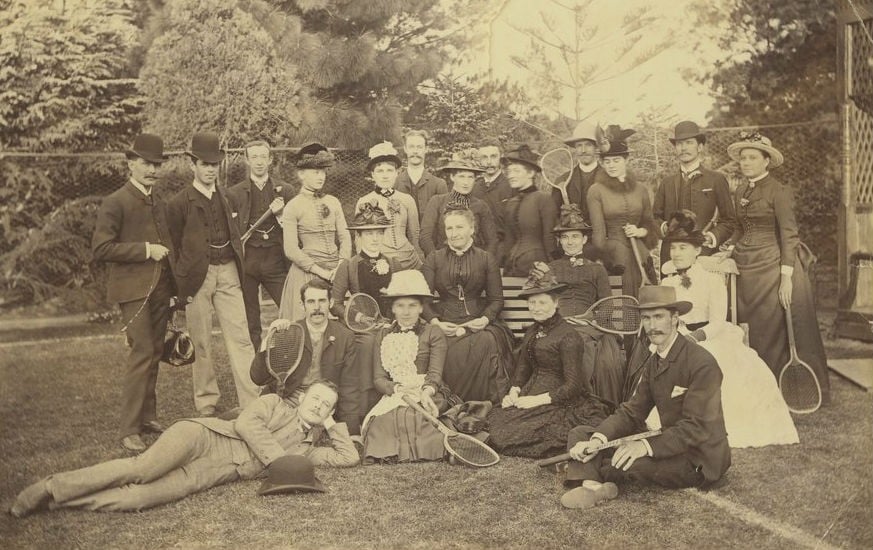
[Unidentified group with tennis racquets], H2011.17/2
Tennis has long been a favoured pastime in Australia. The first Victorian championships took place in 1880 just three years after the first Wimbledon tournament. Within fifteen years the other states had followed suit; New South Wales (1885), Queensland (1889), South Australia (1890), Tasmania (1893) and Western Australia (1895). By the turn of the century there was a lively interstate competition that progressed to a tournament which included players from New Zealand.
The Australasian tennis championships made its debut on a grass court at the Warehousemen’s Cricket Ground in St. Kilda Road, Melbourne on 21 November 1905.
The Advertiser (Adelaide, S.A.) 22 November 1905
There were seventeen competitors in the men’s singles draw. Rodney Heath defeated Dr A. H. Curtis in four sets to become the first Australasian champion and winner of the Slazenger Cup, valued at 50 guineas. While women also took part in this tournament they competed for the Victorian rather than the Australasian title.
[Tennis match in progress, with large numbers of spectators, ball boys and players wearing white], H2012.88/98
Before the First World War the championships were hosted by various cities in the Commonwealth – Sydney, Melbourne, Adelaide, Perth and Brisbane in Australia, as well as Hastings and Christchurch in New Zealand. The competition was suspended during the war years. Sadly, the war resulted in the deaths of three champions; Tony Wilding (1906, 1909), Ernie Parker (1913) and Dr Arthur O’Hara Wood (1911, 1914).
The 1920s saw a number of changes. In 1922 New Zealand decided to leave the competition and after unsuccessful events in the ‘distant’ capitals, Perth and Brisbane in 1921 and 1923, these cities were dropped as venues.
1922 was also the year that women were admitted to the competition in singles, doubles and mixed doubles. They had already been included at Wimbledon since 1884 and the United States since 1887.
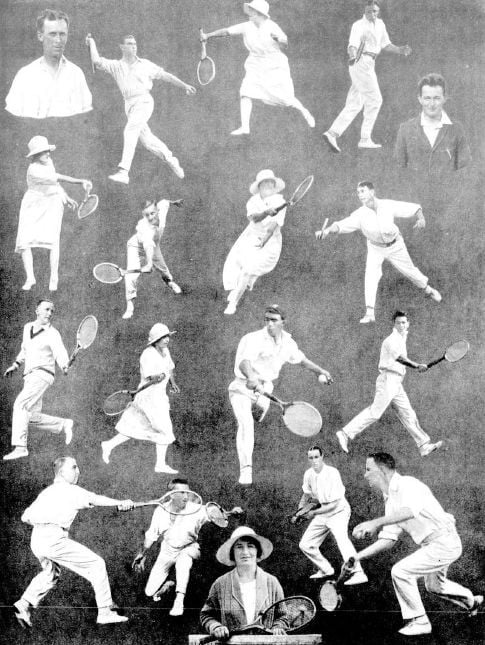
The image above, from the Sydney Mail, 6 December 1922, shows a selection of players who competed in the 1922 Australasian Tennis Championships at Rushcutters Bay, Sydney, including the first women’s champion, Mall Molesworth (top row) and men’s champion, James Outram Anderson (bottom row, second from right).
In 1926 the Association moved its headquarters from Sydney to Melbourne and was re-named, Australian Lawn Tennis Association. The new Kooyong courts hosted the Australian titles the following year. With the exception of another suspension for World War II (1941-1945) the Championships continued to be held annually until 1985.
The International Lawn Tennis Federation (ILTF) met in Paris in March 1968 and voted unanimously for ‘open’ tennis, where professionals and amateurs could compete at the same tournament. The British embraced the change in that same year. The first Australian Open was contested in 1969 and Kooyong became the favoured venue from 1972. However, by the end of the decade Australia was at risk of losing its status as host of a grand slam, that is, one of the four major international tennis tournaments. To attract the best players from Europe and the United States, it had become necessary to update the aging facilities and increase prize money.
[Elevated view of centre court at Kooyong Tennis Club, with many spectators] [1980s] / Rennie Ellis H2012.140/366
Lawn Tennis Association Australia (re-named Tennis Australia in 1986) had started looking at alternatives for a national tennis centre and in 1981 a recommendation was made. Supported by the Victorian Government, the proposal was for a 15,000 seat multi-purpose stadium with a complex of indoor and outdoor courts and state-of-the-art facilities. The result was the riverside complex, Flinders Park which was host to the Australian Open for the first time in January, 1988.
Australian Open – National Tennis Centre, Melbourne [1988?] / Rennie Ellis H2011.150/128
Since 1996 the venue where players vie for the Norman Brookes Challenge Cup and the Daphne Akhurst Memorial Cup has been known as Melbourne Park. The playing surface is now plexicushion rather than grass, the clothing is likely to be coloured rather than white, the racquets are usually made from graphite composites rather than wood and the total prize money is in the millions of dollars. But what hasn’t changed is that tennis is still a game enjoyed by many.
Bibliography
Matthews, Bruce Game, set and glory: a history of the Australian tennis championships
Johnson, Joseph Grand slam Australia: the story of the Australian open tennis championships
Michie, Rosanne (text) Through the roof: ten years of the Australian Open and entertainment at Melbourne Park

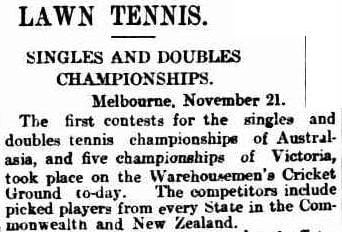
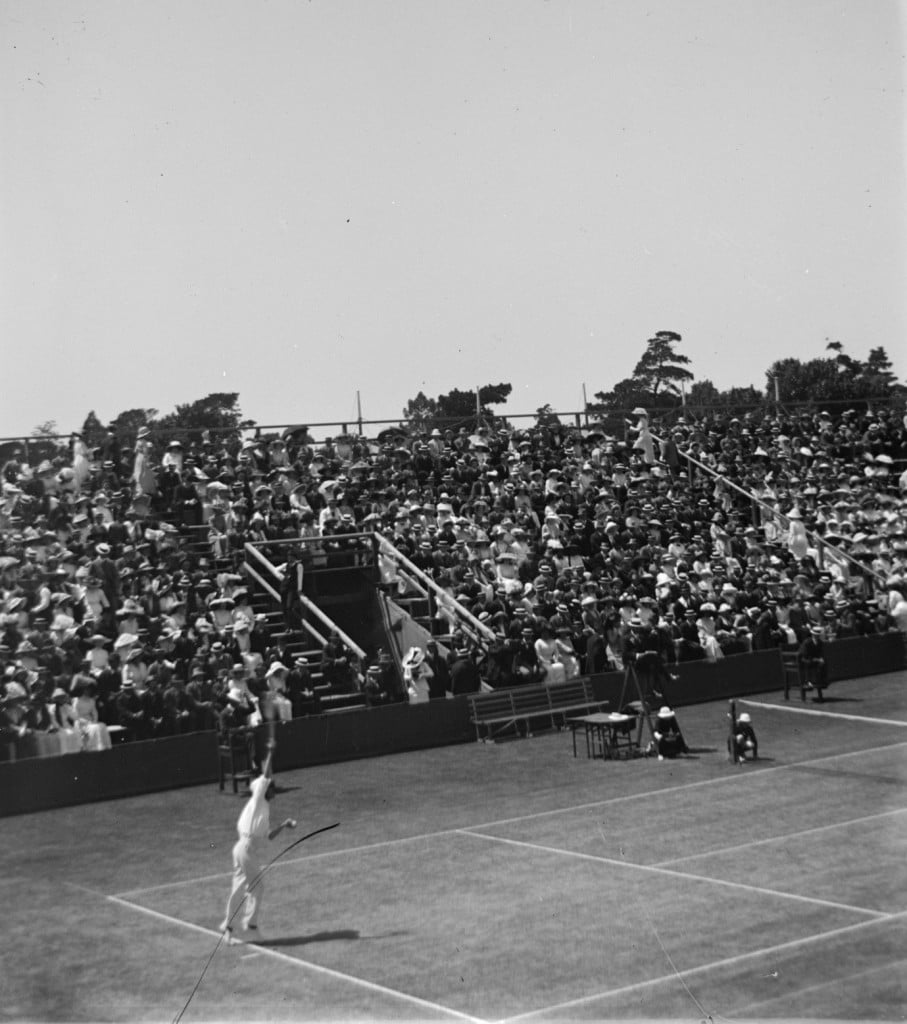
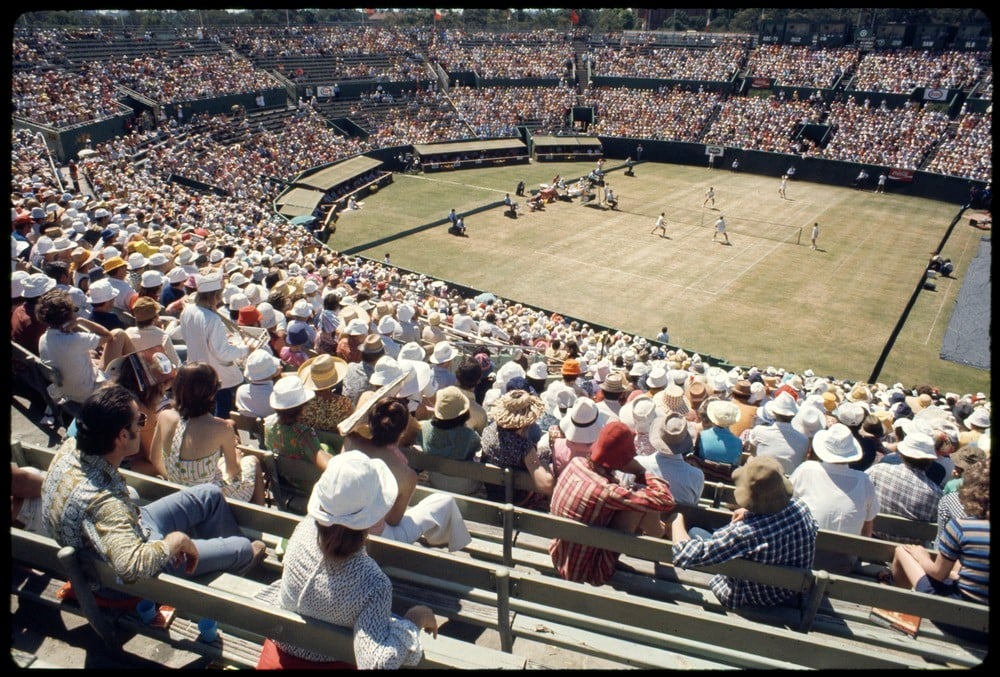


Is the inter-state competition still runnng?
Thanks for reading Bernard.
I can only see there is an interstate competition for juniors- not at the open professional level.
Once we became federated, we adopted a national competition.
Paul